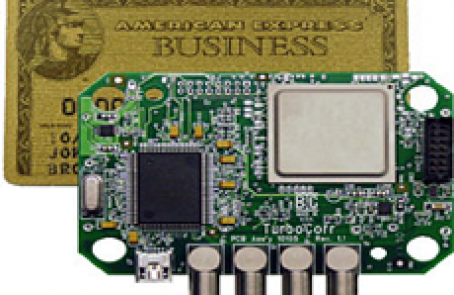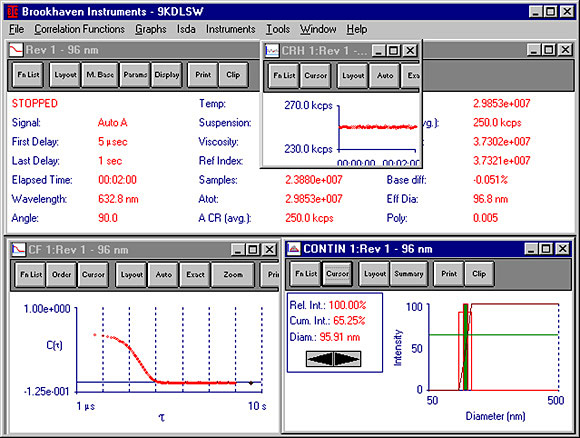
Features at a glance
- USB communications
- Compact size, low power requirements, less than 300 mW
- Auto- & cross-correlation modes
- Up to 522 hardware channels
- Sampling time 25 ns to 40 ms
- Delay range 25 ns to 1,310 s
- 100% efficient, real-time operation over the full delay time range
- Supplied with control software for use with Windows™
Operating Modes
The new TurboCorr digital correlator is the successor to the BI-9010AT. The new correlator card is designed using a cutting edge digital signal processor (DSP) which allows all the circuits to be embedded in a single, high density chip. The benefits of this design include full, in-system reprogrammability, significantly reduced power consumption as compared to the BI-9000AT, and a compact design. The TurboCorr now uses USB communications for enhanced portability and compatability.
The TurboCorr is an advanced and extremely versatile digital photon correlator and counter designed for use in dynamic (DLS) and static (SLS) light scattering.
The TurboCorr has an adjustable delay range capable of producing a contiguous correlation function from 25 ns to 1,310 s representing a time axis that spans more than 10 decades. The middle and low speed circuits can be operated as independent correlators, simultaneously processing different input signals. This can be used, for example, to correlate two light scattering signals from different detector angles simultaneously. An on-board microprocessor on each correlator card controls the circuits and collects the correlation function(s). This relieves the CPU of the host computer of many tasks. Unlike other correlators, the TurboCorr never requires prescaling.
Operating modes
The TurboCorr digital correlator can be used for real-time operation in both auto- and cross-correlation modes. It is 100% efficient in either mode over the entire delay time range. Through the software, the user can select the number of hardware channels, either linearly spaced or geometrically spaced. In addition, channel spacing can be user defined. The TurboCorr can be used for a wide variety of dynamic light scattering applications.
The TurboCorr includes the BI-DLSW control software for Windows, shown below. In addition, Brookhaven offers a number of additional software programs suitable for use with the TurboCorr and the BI-200SM laser light scattering goniometer system. These applications include particle sizing by dynamic light scattering (cumulants, NNLS, CONTIN, exponential sampling, and double exponential), characterization of gels and glass transitions (Williams-Watts), and molecular weight measurements by total intensity methods (Zimm, Berry, and Debye plots). A user friendly alignment/stability test program (BI-IST) is available for the BI-200SM precision goniometer.



 (028) 22 611 711
(028) 22 611 711
 Danh mục
Danh mục
 High Purity Northwest Inc.
High Purity Northwest Inc.
 Phóng Điện Cục Bộ
Phóng Điện Cục Bộ




























 Gọi điện
Gọi điện SMS
SMS Chỉ Đường
Chỉ Đường